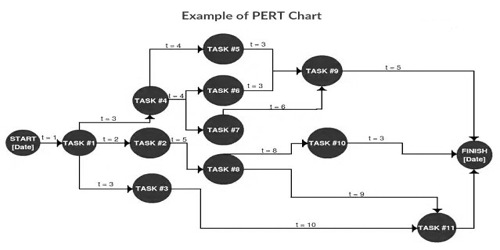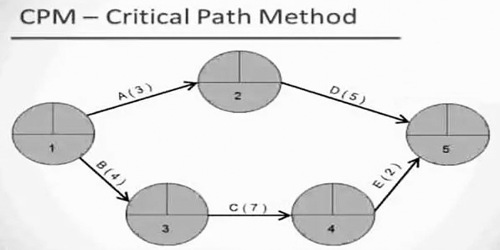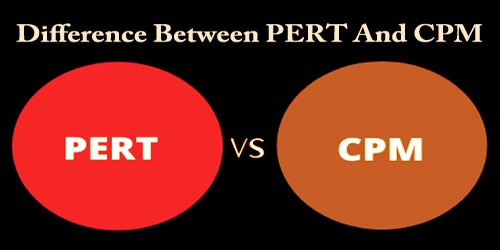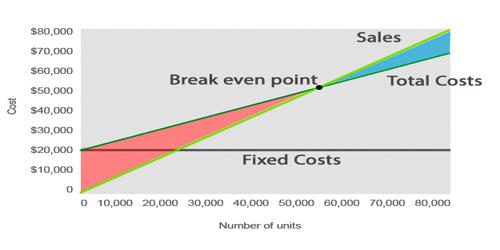Program (or Project) Evaluation and Review Technique (PERT) –
PERT is an acronym for Program (Project) Evaluation and Review Technique, in which planning, scheduling, organizing, coordinating, and controlling uncertain activities take place. The technique studies and represents the tasks undertaken to complete a project, to identify the least time for completing a task and the minimum time required to complete the whole project. It was developed in the late 1950s. It is aimed to reduce the time and cost of the project.
In PERT, the project is segregated into events and activities. After discovering a proper sequence, the network is built. It is then the time for each task is calculated, and a path is regulated.
Notably, the PERT technique is resourceful when dealing with unpredictable activities in a project since it accounts for uncertainties that might occur. This is achieved by controlling the uncertainties in a manner that the time allocated for the project is not affected.

PERT uses time as a variable which represents the planned resource application along with performance specification. In this technique, first of all, the project is divided into activities and events. After that proper sequence is ascertained, and a network is constructed. After that time needed in each activity is calculated and the critical path (longest path connecting all the events) is determined.
Critical Path Method (CPM) –
Critical Path Method (CPM) developed in the 1950s is an algorithm needed for planning, arranging, scheduling, coordinating, and governing of a project. It is presumed that in this method the activity time is specified and fixed. It is used to calculate the quickest and latest start time for each task.
The process differentiates the critical and non-critical activities to reduce the time and avoid the queue generation in the process. The reason for the identification of critical activities is that, if any activity is delayed, it will cause the whole process to suffer. That is why it is named as Critical Path Method (CPM).
CPM technique is highly recommended for projects whose activities are predictable, for example, construction of a house. The technique assesses the earliest and latest possible time to start each of the project’s activities.

In this method, first of all, a list is prepared consisting of all the activities needed to complete a project, followed by the computation of the time required to complete each activity. After that, the dependency between the activities is determined. Here, ‘path’ is defined as a sequence of activities in a network. The critical path is the path with the highest length.
Key Differences Between PERT and CPM –
Despite PERT and CPM techniques being used in designing a project’s activities network, the two methods remain very different. The following are critical differences between PERT and CPM techniques.
- While the PERT technique is event-oriented, the CPM is an activity-oriented technique towards the determination of the cost and time to be taken from the start till the end of a project. That is, the PERT network chart is constructed based on the events of the project at hand. On the other hand, a CPM chart network is developed based on jobs that make up the whole project.
- PERT is a project management technique, whereby planning, scheduling, organizing, coordinating, and controlling uncertain activities are done. CPM is a statistical technique of project management in which planning, scheduling, organizing, coordination, and control of well-defined activities take place.
- PERT is a technique of planning and control of time. Unlike CPM, which is a method to control costs and time.
- While PERT is evolved as a research and development project, CPM evolved as a construction project.
- PERT is set according to events while CPM is aligned towards activities.
- A deterministic model is used in CPM. Conversely, PERT uses a probabilistic model.
- There are three times estimates in PERT, i.e. optimistic time (to), most likely time ™, pessimistic time (tp). On the other hand, there is only one estimate in CPM.
- PERT technique is best suited for a high precision time estimate, whereas CPM is appropriate for a reasonable time estimate.
- PERT deals with unpredictable activities, but CPM deals with predictable activities.
- PERT is used where the nature of the job is non-repetitive. In contrast, CPM involves the job of repetitive nature.
- There is a demarcation between critical and non-critical activities in CPM, which is not in the case of PERT.
- PERT is best for research and development projects, but CPM is for non-research projects like construction projects.
- Crashing is a compression technique applied to CPM, to shorten the project duration, along with the least additional cost. The crashing concept is not applicable to PERT.
The PERT technique is an event-based time estimation technique for projects whose activities are unpredictable and non-repetitive. On the other hand, the CPM technique is an activity-based time and cost estimation technique for projects whose activities are predictable and repetitive.
The difference between these two project management tools is getting blurred as the techniques are merged with the passage of time. That is why, in most projects, they are being used as a single project. The primary point that distinguishes PERT from CPM is that the former gives the extreme importance of time, i.e. if the time is minimized, consequently the cost will also be reduced.
Information Sources:
















